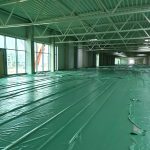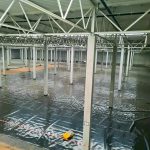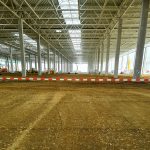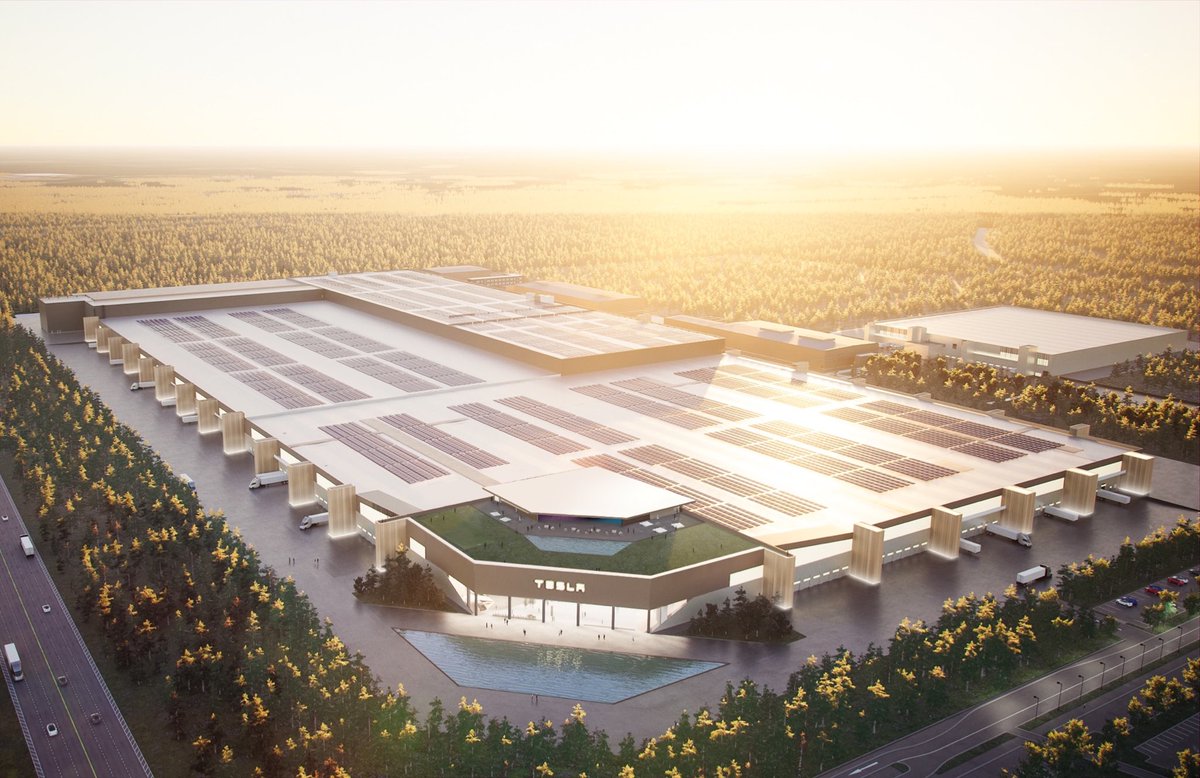
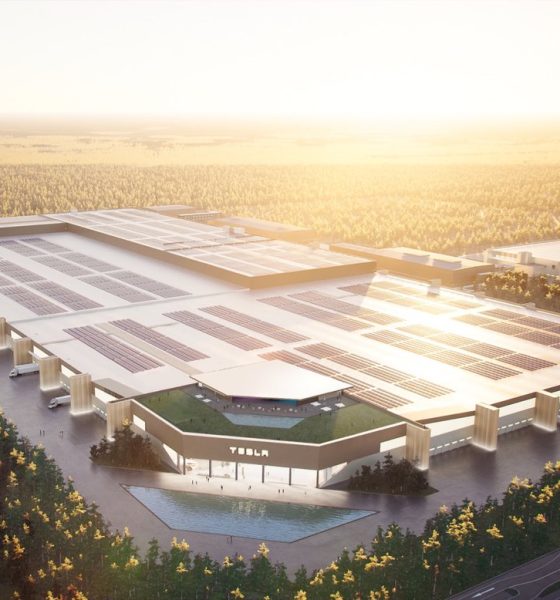
News
Tesla announced its first European Gigafactory 1 year ago today: A timeline
One year ago today, Tesla CEO Elon Musk announced that the automaker would open a production facility in Germany. Upon accepting an award at the Golden Steering Wheel awards alongside Volkswagen CEO Herbert Diess, Musk shocked Tesla fans everywhere by revealing its intentions. But what has transpired for the electric automaker since then is a culmination of hard work, dedication, efficiency, and a little bit of luck, and Tesla has been able to erect several buildings of the facility just eleven months after the beginning of the construction process.
November 12, 2019: Elon Musk announces Giga Berlin
“Everyone knows that German engineering is outstanding, for sure. That’s part of the reason why we are locating our Gigafactory Europe in Germany. We are also going to create an engineering and design center in Berlin, because Berlin has some of the best art in the world,” Musk said at the Golden Steering Wheel Awards in Germany last year. Musk also stated that the Model Y would be the initial focus of the new Gigafactory’s production lines.
Tesla CEO Elon Musk and Volkswagen CEO Herbert Diess exchange compliments at an award ceremony. (Credit: YouTube/AUTO BILD)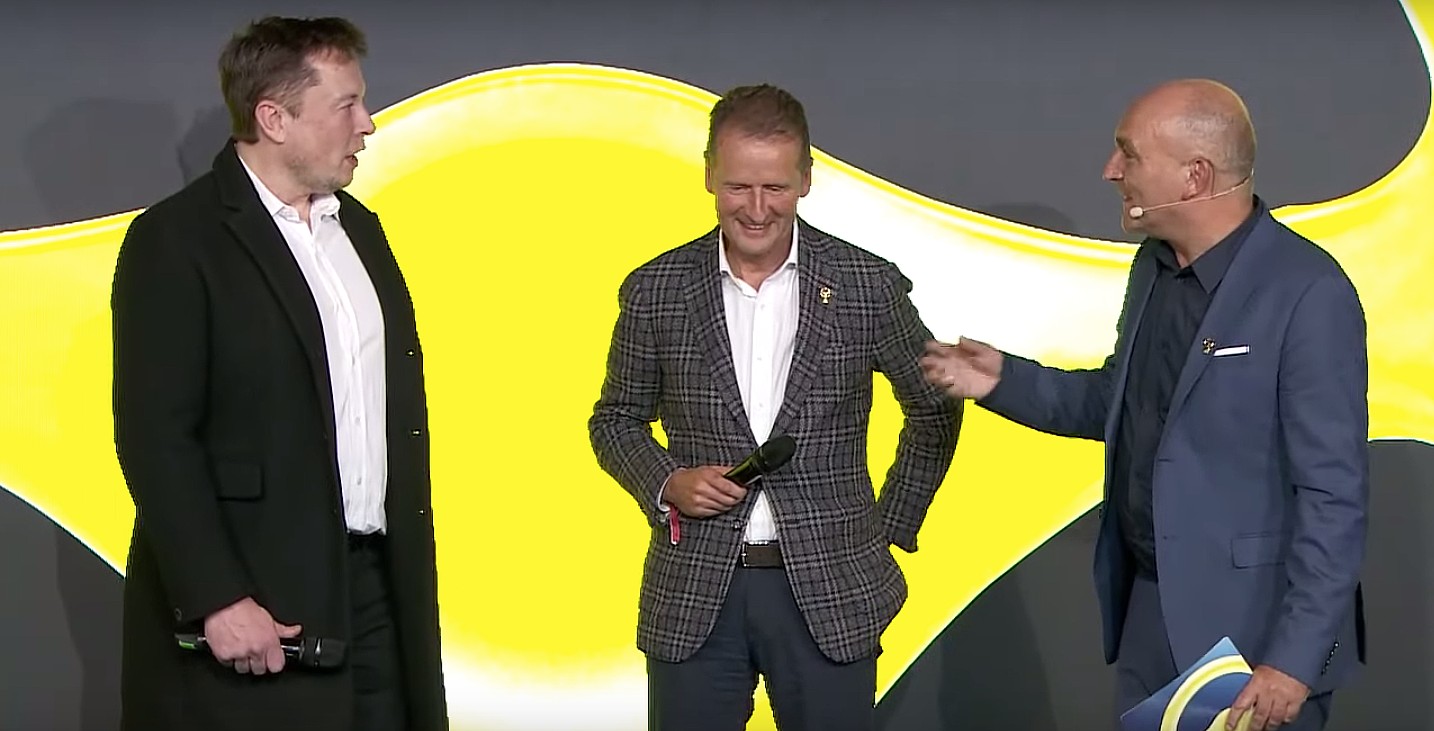
December 2019: Permits and Regulatory Approval
Tesla was working with the local government in Brandenburg to gain regulatory approval to begin ground clearing measures on the 741-acre plot of land that the automaker had purchased for a bargain price. After the land sale price was finalized, along with the permission of local authorities, Tesla could begin making progress on the land.
Credit: YouTube/J.-U. Koehler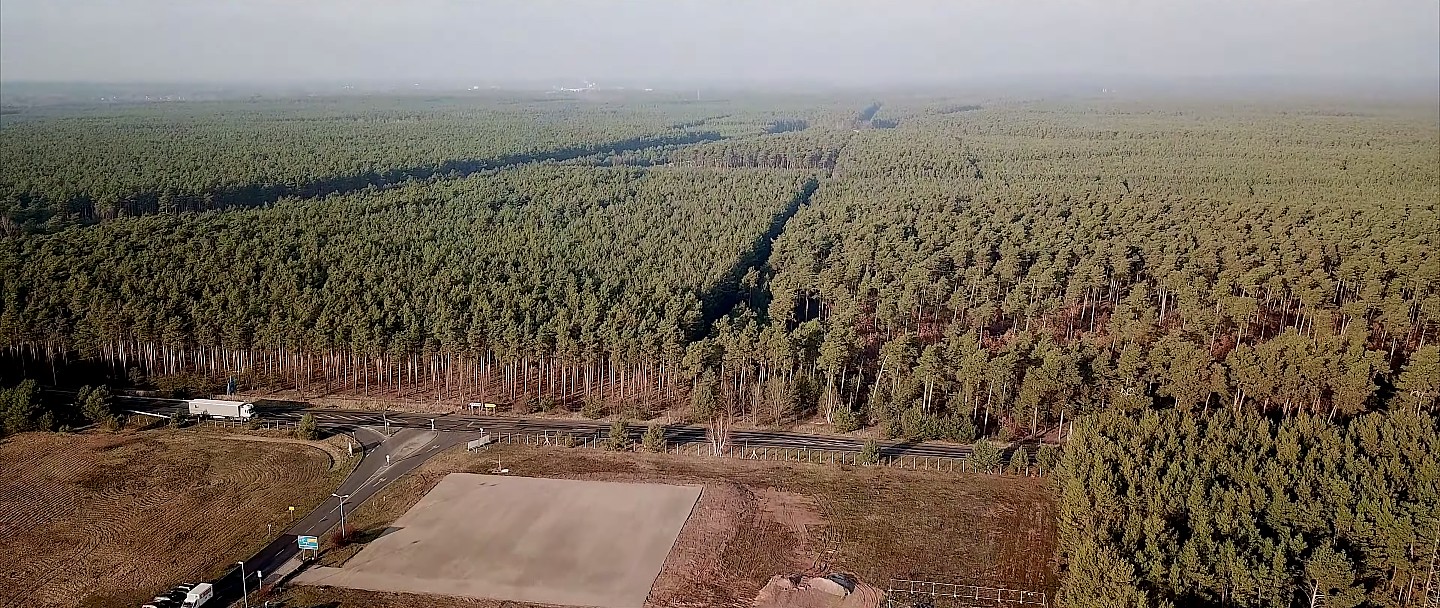
January 2020: Ground clearing begins
After Tesla received preliminary approval, ground clearing began. While this sparked some controversy and concern from environmental groups, Tesla had already been planning to replace trees in areas surrounding Brandenburg, promising to replant three times as many trees as it had removed from the property. To be clear, the trees that were removed were of “inferior quality,” according to Grünheide Mayor Arne Christiani, as they were used for commercial cardboard production.
Credit: Emil Senkel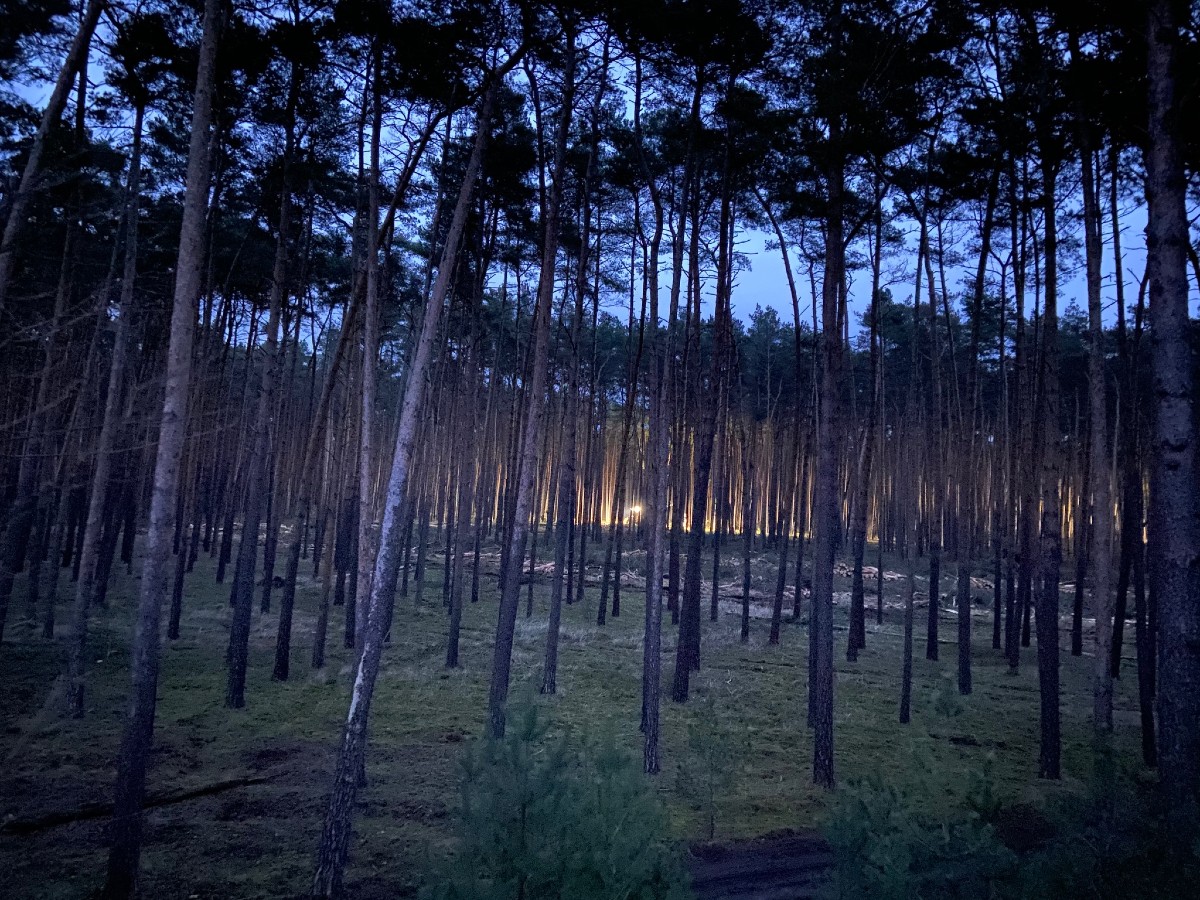
April 2020: Groundbreaking imminent, land preparation nears completion
On April 20th, Giga Berlin construction crews worked on the ground leveling and excavation of the land at the site. With only 90 hectares of land free from the trees, Tesla had its work cut out. Just a few days before ground leveling, the final tree was removed from the land, making it completely clear of any trees, all while not harming any wildlife.
Credit: YouTube | Giga Berlin / Gigafactory4, build GIGABERLIN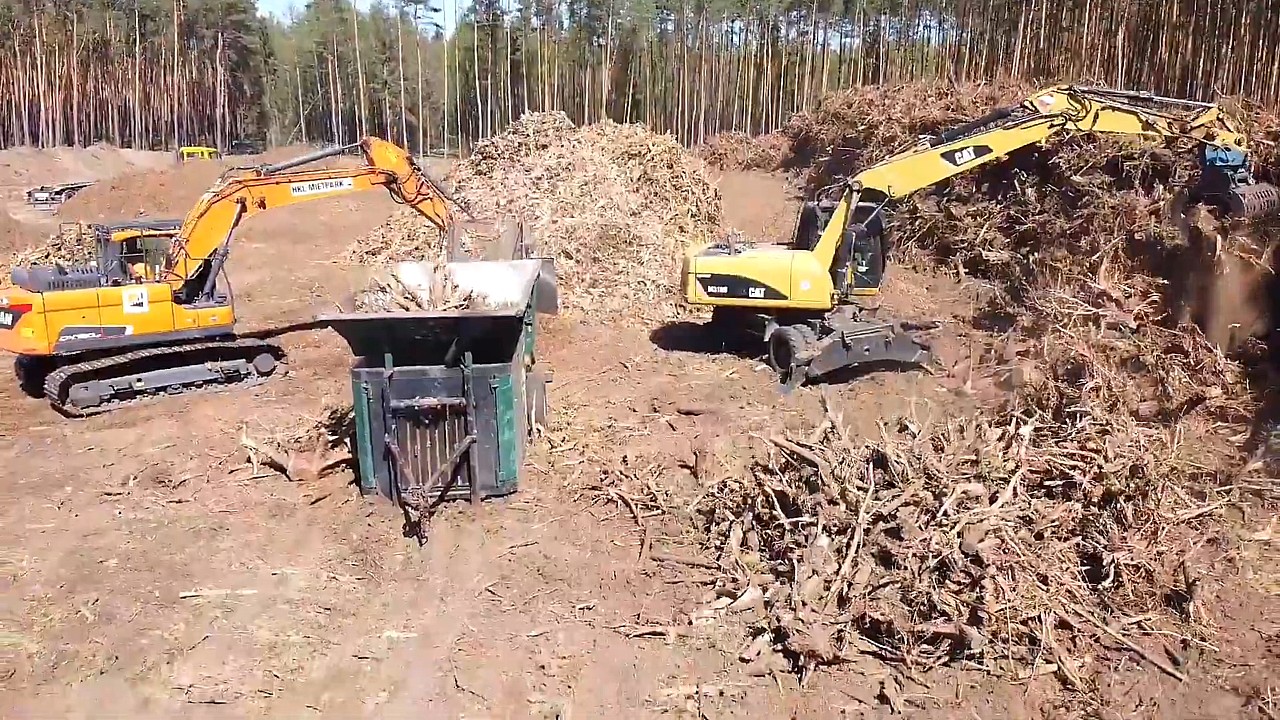
May 2020: Foundational work gets approval, begins
Foundational work began appearing at the site in late May. Tesla had to abide by some guidelines to keep drinking water protected and keep the noise down after 10 pm. Aquifers were also installed to protect any groundwater, which was a growing concern among local residents.
Credit: Twitter | @tobilindh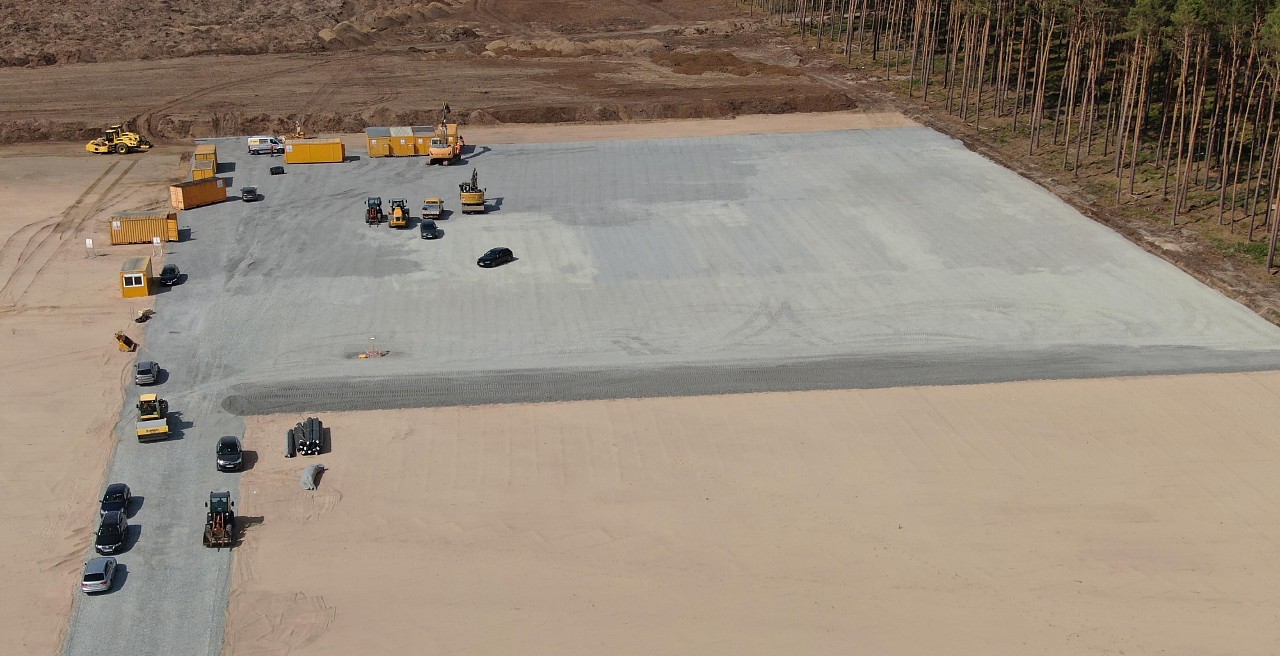
June 2020: Structures begin appearing, pillars and beams installed
The main pillars of the Drive Unit facility began appearing at the site, which were transported by train. Additionally, the installation of these pillars began just a few days later. It was the first structural portion of any of Giga Berlin’s facilities to be implemented, and prefabricated construction methods contributed to an accelerated construction effort at the site.
Credit: Twitter | @tobilindh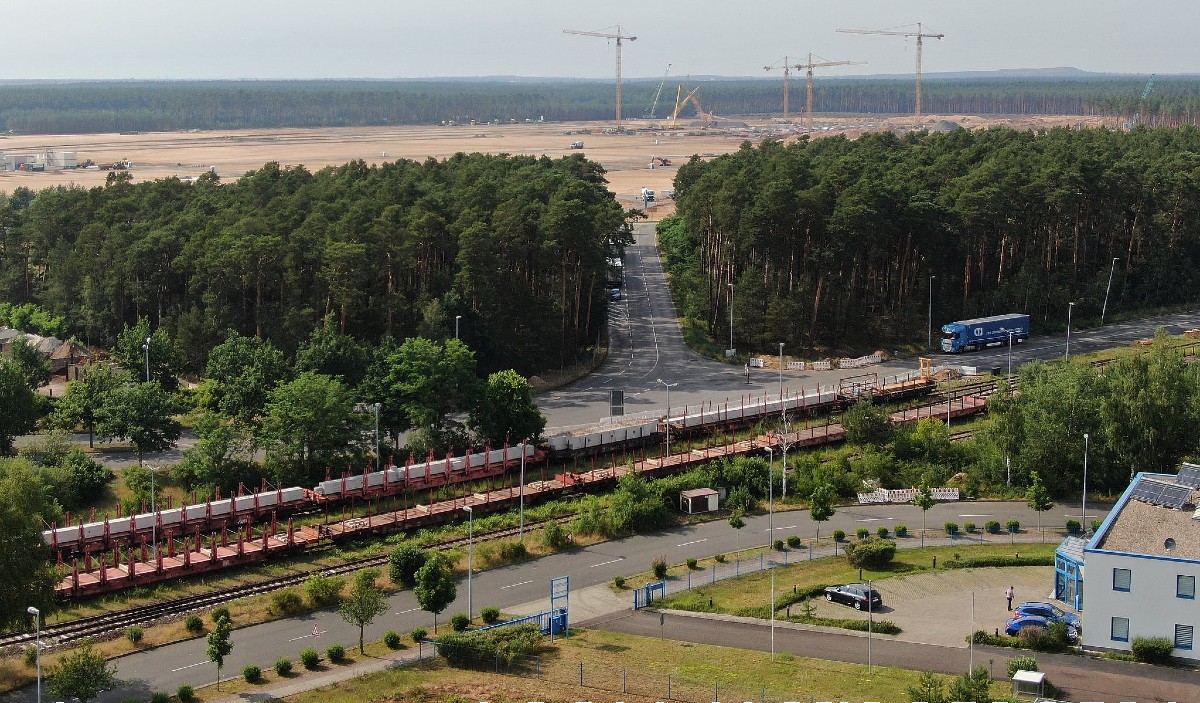
August 2020: Body In White construction begins, Drive Unit facility nears completion
The rapid pace of construction was evident as the Drive Unit facility neared completion, and the Body-in-White facility started construction. With pillars and beams being installed just two months prior for the first time, the rate of construction was certainly impressive. There was still plenty of work to go, however.
The Northern wall of the Drive Unit is nearly completed. (Credit: @gigafactory_4 on Twitter)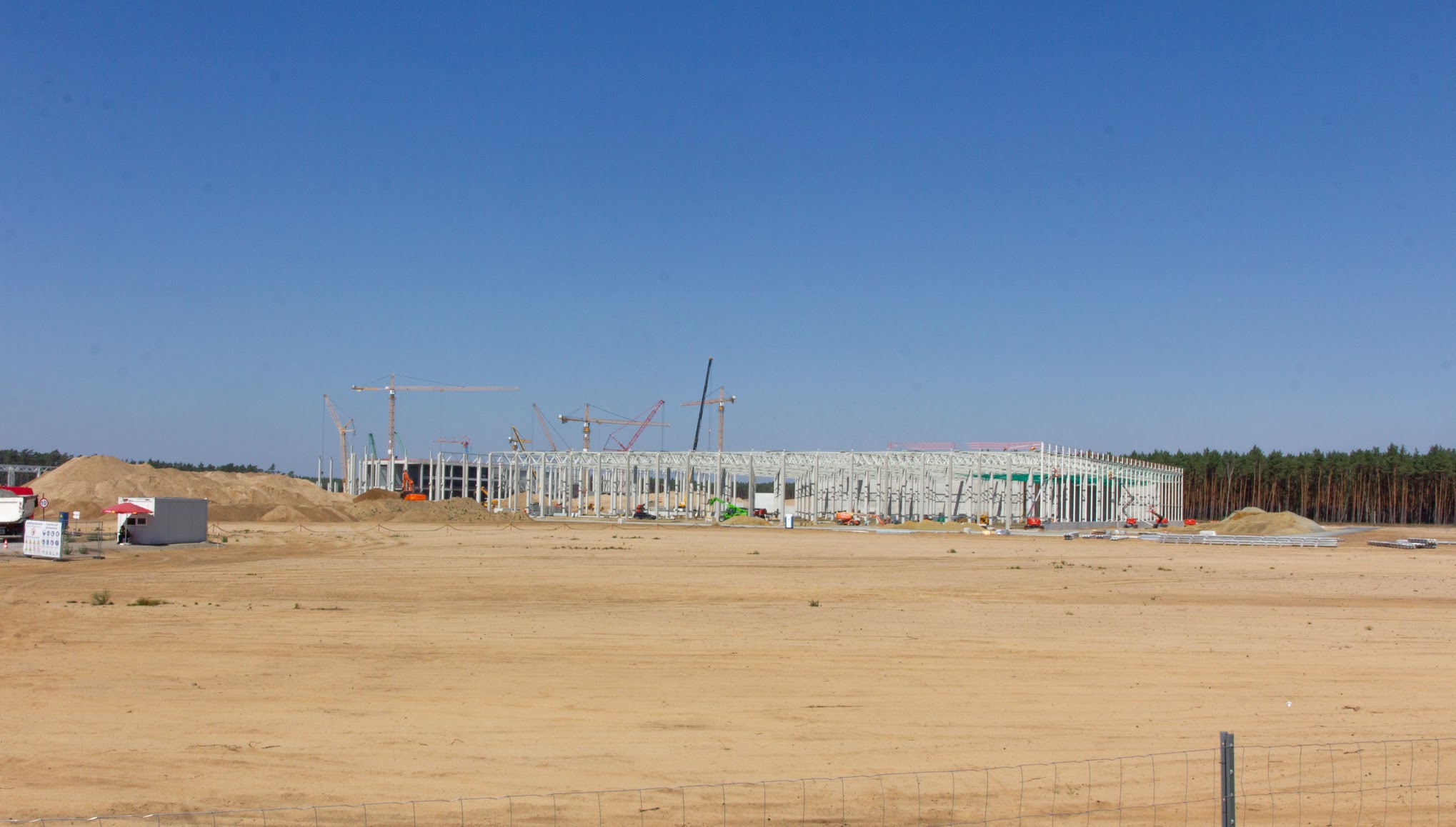
September 2020: Elon Musk’s First Visit to Giga Berlin
In a long-overdue visit because of the COVID-19 pandemic, Musk detailed Model Y redesign and battery cell production at the facility. Met with a warm reception, Musk’s first visit to Giga Berlin included visits with local politicians, including vocal supporter Jörg Steinbach, an economic minister.
Credit: @tobilindh | Twitter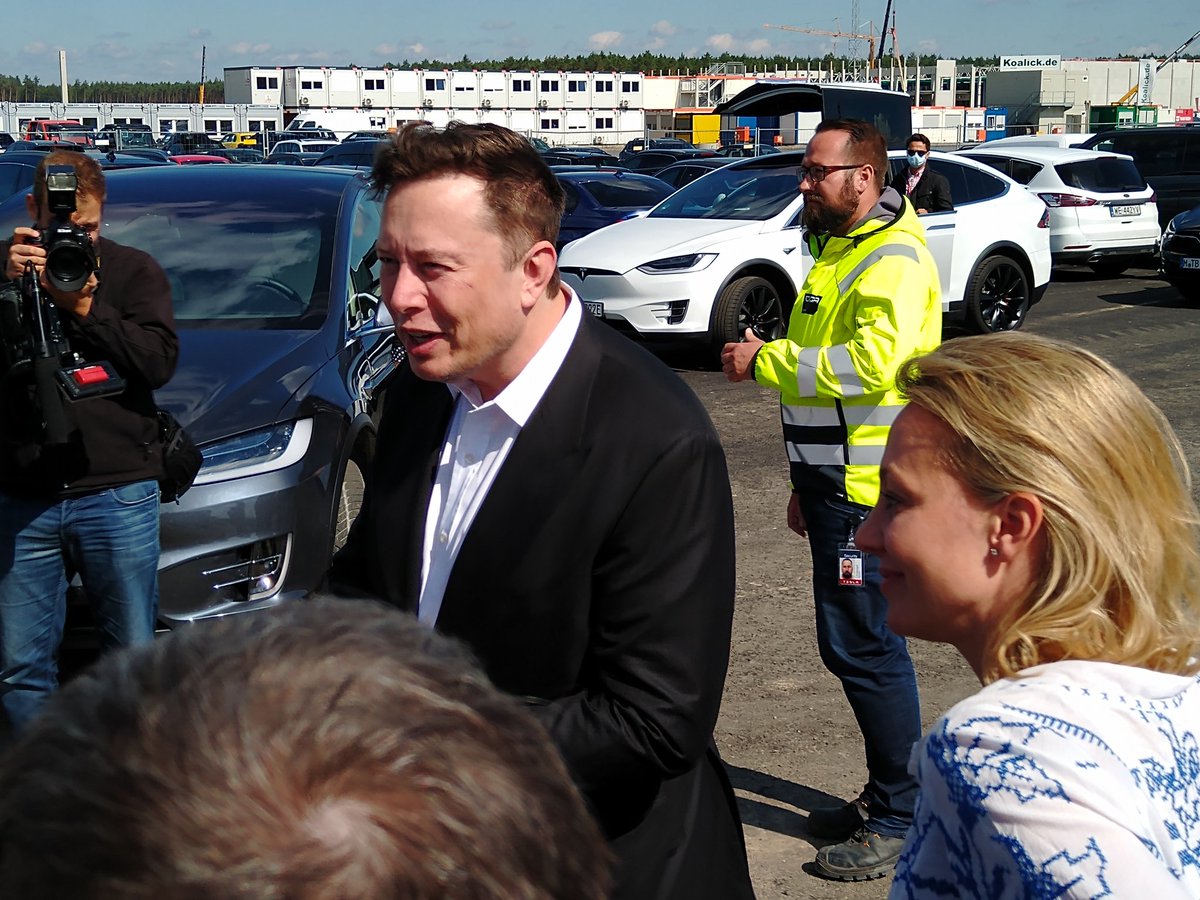
Today: Where does Giga Berlin’s progress stand?
Currently, both the Drive Unit and Body-In-White facilities are constructed, with interior fittings being installed. Flooring and machinery have yet to make its way into these facilities, but progress is well ahead of schedule. While Tesla still lists Giga Berlin’s starting production date as Summer 2021, some of those in Europe have stated that deliveries could be expected in Q1 or Q2 2021.

News
Tesla dispels reports of ‘sales suspension’ in California
“This was a “consumer protection” order about the use of the term “Autopilot” in a case where not one single customer came forward to say there’s a problem.
Sales in California will continue uninterrupted.”

Tesla has dispelled reports that it is facing a thirty-day sales suspension in California after the state’s Department of Motor Vehicles (DMV) issued a penalty to the company after a judge ruled it “misled consumers about its driver-assistance technology.”
On Tuesday, Bloomberg reported that the California DMV was planning to adopt the penalty but decided to put it on ice for ninety days, giving Tesla an opportunity to “come into compliance.”
Tesla enters interesting situation with Full Self-Driving in California
Tesla responded to the report on Tuesday evening, after it came out, stating that this was a “consumer protection” order that was brought up over its use of the term “Autopilot.”
The company said “not one single customer came forward to say there’s a problem,” yet a judge and the DMV determined it was, so they want to apply the penalty if Tesla doesn’t oblige.
However, Tesla said that its sales operations in California “will continue uninterrupted.”
It confirmed this in an X post on Tuesday night:
This was a “consumer protection” order about the use of the term “Autopilot” in a case where not one single customer came forward to say there’s a problem.
Sales in California will continue uninterrupted.
— Tesla North America (@tesla_na) December 17, 2025
The report and the decision by the DMV and Judge involved sparked outrage from the Tesla community, who stated that it should do its best to get out of California.
One X post said California “didn’t deserve” what Tesla had done for it in terms of employment, engineering, and innovation.
Tesla has used Autopilot and Full Self-Driving for years, but it did add the term “(Supervised)” to the end of the FSD suite earlier this year, potentially aiming to protect itself from instances like this one.
This is the first primary dispute over the terminology of Full Self-Driving, but it has undergone some scrutiny at the federal level, as some government officials have claimed the suite has “deceptive” naming. Previous Transportation Secretary Pete Buttigieg was vocally critical of the use of the name “Full Self-Driving,” as well as “Autopilot.”
News
New EV tax credit rule could impact many EV buyers
We confirmed with a Tesla Sales Advisor that any current orders that have the $7,500 tax credit applied to them must be completed by December 31, meaning delivery must take place by that date. However, it is unclear at this point whether someone could still claim the credit when filing their tax returns for 2025 as long as the order reflects an order date before September 30.
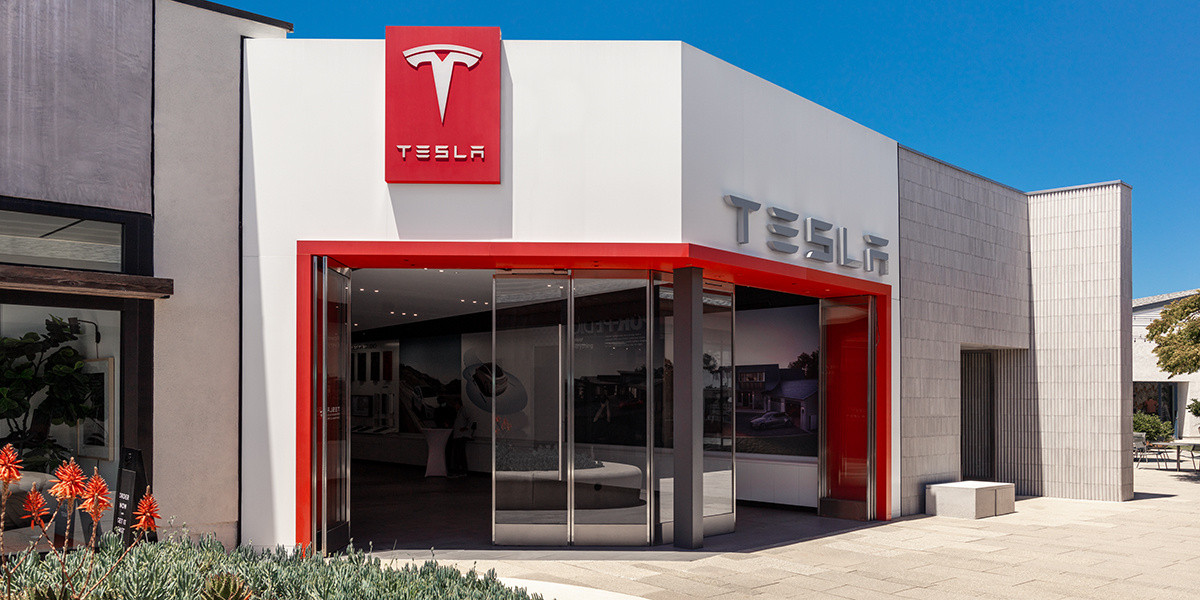
Tesla owners could be impacted by a new EV tax credit rule, which seems to be a new hoop to jump through for those who benefited from the “extension,” which allowed orderers to take delivery after the loss of the $7,500 discount.
After the Trump Administration initiated the phase-out of the $7,500 EV tax credit, many were happy to see the rules had been changed slightly, as deliveries could occur after the September 30 cutoff as long as orders were placed before the end of that month.
However, there appears to be a new threshold that EV buyers will have to go through, and it will impact their ability to get the credit, at least at the Point of Sale, for now.
Delivery must be completed by the end of the year, and buyers must take possession of the car by December 31, 2025, or they will lose the tax credit. The U.S. government will be closing the tax credit portal, which allows people to claim the credit at the Point of Sale.
🚨UPDATE: $7,500 Tax Credit Portal “Closes By End of Year”.
This is bad news for pending Tesla buyers (MYP) looking to lock in the $7,500 Tax Credit.
“it looks like the portal closes by end of the year so there be no way for us to guarantee the funds however, we will try our… pic.twitter.com/LnWiaXL30k
— DennisCW | wen my L (@DennisCW_) December 15, 2025
We confirmed with a Tesla Sales Advisor that any current orders that have the $7,500 tax credit applied to them must be completed by December 31, meaning delivery must take place by that date.
However, it is unclear at this point whether someone could still claim the credit when filing their tax returns for 2025 as long as the order reflects an order date before September 30.
If not, the order can still go through, but the buyer will not be able to claim the tax credit, meaning they will pay full price for the vehicle.
This puts some buyers in a strange limbo, especially if they placed an order for the Model Y Performance. Some deliveries have already taken place, and some are scheduled before the end of the month, but many others are not expecting deliveries until January.
Elon Musk
Elon Musk takes latest barb at Bill Gates over Tesla short position
Bill Gates placed a massive short bet against Tesla of ~1% of our total shares, which might have cost him over $10B by now
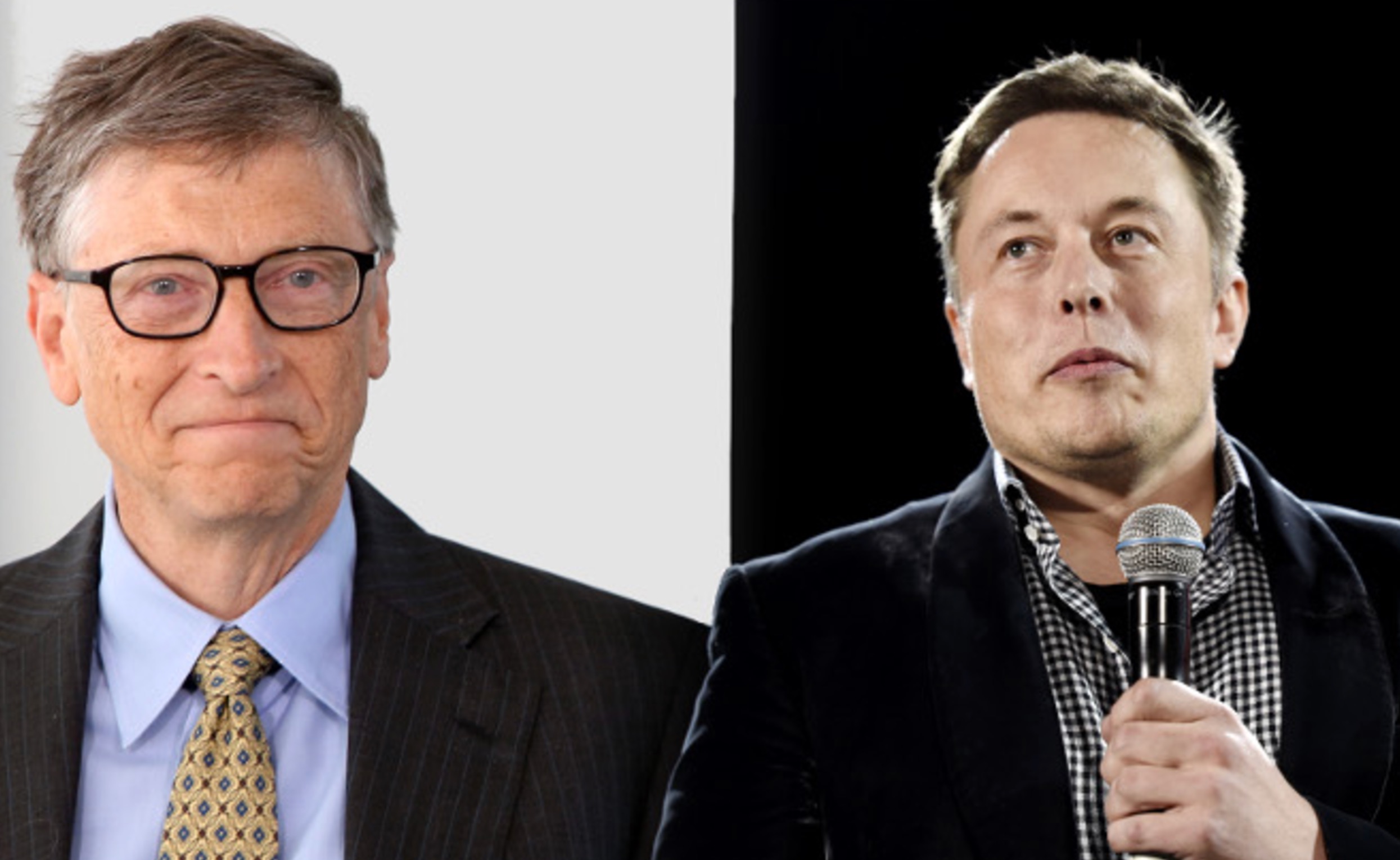
Elon Musk took his latest barb at former Microsoft CEO Bill Gates over his short position against the company, which the two have had some tensions over for a number of years.
Gates admitted to Musk several years ago through a text message that he still held a short position against his sustainable car and energy company. Ironically, Gates had contacted Musk to explore philanthropic opportunities.
Elon Musk explains Bill Gates beef: He ‘placed a massive bet on Tesla dying’
Musk said he could not take the request seriously, especially as Gates was hoping to make money on the downfall of the one company taking EVs seriously.
The Tesla frontman has continued to take shots at Gates over the years from time to time, but the latest comment came as Musk’s net worth swelled to over $600 billion. He became the first person ever to reach that threshold earlier this week, when Tesla shares increased due to Robotaxi testing without any occupants.
Musk refreshed everyone’s memory with the recent post, stating that if Gates still has his short position against Tesla, he would have lost over $10 billion by now:
Bill Gates placed a massive short bet against Tesla of ~1% of our total shares, which might have cost him over $10B by now
— Elon Musk (@elonmusk) December 17, 2025
Just a month ago, in mid-November, Musk issued his final warning to Gates over the short position, speculating whether the former Microsoft frontman had still held the bet against Tesla.
“If Gates hasn’t fully closed out the crazy short position he has held against Tesla for ~8 years, he had better do so soon,” Musk said. This came in response to The Gates Foundation dumping 65 percent of its Microsoft position.
Tesla CEO Elon Musk sends final warning to Bill Gates over short position
Musk’s involvement in the U.S. government also drew criticism from Gates, as he said that the reductions proposed by DOGE against U.S.A.I.D. were “stunning” and could cause “millions of additional deaths of kids.”
“Gates is a huge liar,” Musk responded.
It is not known whether Gates still holds his Tesla short position.
